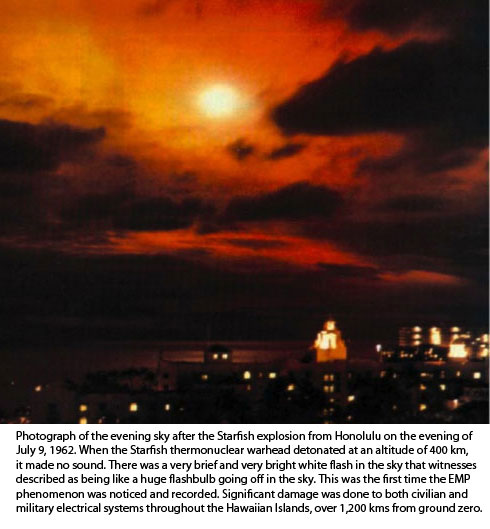How would you know if an EMP attack had occurred?
You could be driving your automobile and it suddenly stops and refuses to re-start. You get out your mobile phone to call for help but notice there is no signal. You begin walking home and notice other vehicles stalled along the road. You finally reach home to find it blacked out – no lights, no TV and the refrigerator not working.
You then discover there is no running water and, after the first flush, the toilet does not refill. Even though you have solar panels on the roof, you discover that when the grid goes down the solar system automatically switches off. You switch on a battery-powered radio to hear a government message exhorting you to stay calm and that the power will be restored as soon as possible.
The truth is, power may not be restored for months or even years.
Among the vulnerabilities of the electricity grid are devices known as extra high voltage (EHV) transformers that send electricity over long distances. These devices can be as large as a house and weigh hundreds of tonnes. Many EHV transformers would probably burn out in an EMP attack. Even a few failures would cause catastrophic cascading effects on the electricity system. They are only manufactured in a few places in the world and must be custom-built. Worldwide production capacity is less than 100 units per year and serves a world market, one that is growing at a rapid rate in countries such as China and India. Delivery time of a new transformer ordered today is nearly three years, including both manufacturing and transportation. An event damaging several of these transformers at once means it may well extend delivery times well beyond current rates.
Another key vulnerability is the widespread use of robots of the modern age known as Supervisory Control and Data Acquisition (SCADA) systems. SCADAs are essentially small computers, numbering in the hundreds of thousands, ubiquitous in the critical infrastructure that performs jobs previously completed by hundreds of thousands of human technicians during the 1960s and earlier. They find extensive use in critical infrastructure applications such as electrical transmissions and distribution, water management, and oil and gas pipelines. Because they are sensitive electronic devices, SCADAs are especially vulnerable to an EMP



The question is NOT “How do you survive the first 30 days afte an EMP attack”
The question is “HOW DO YOU SURVIVE NLONG TER AFTER AN EMP ATTACK”